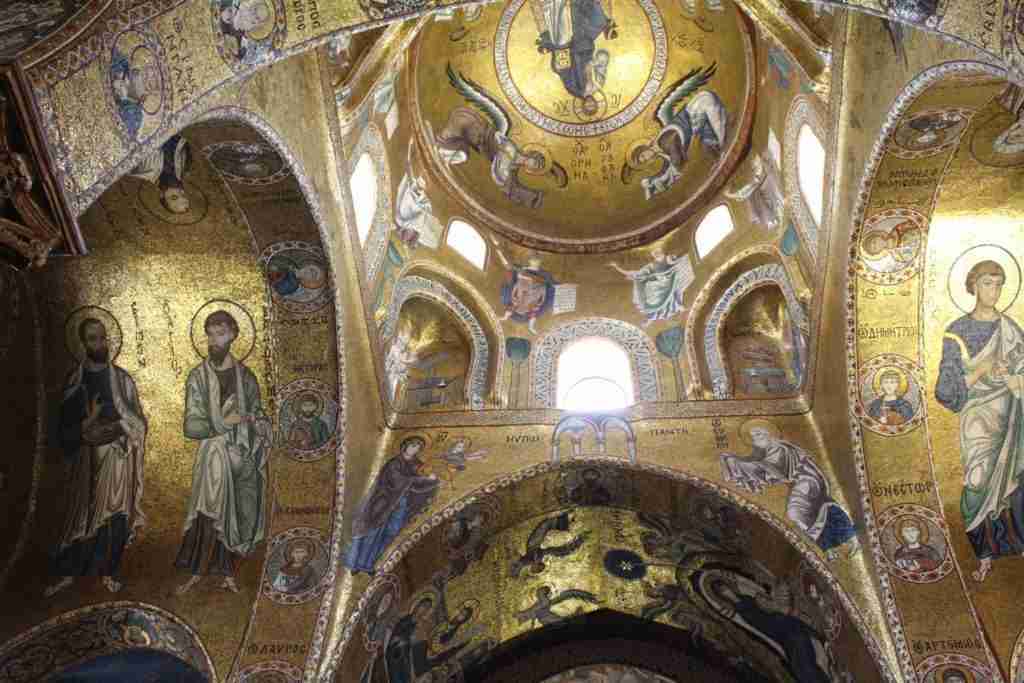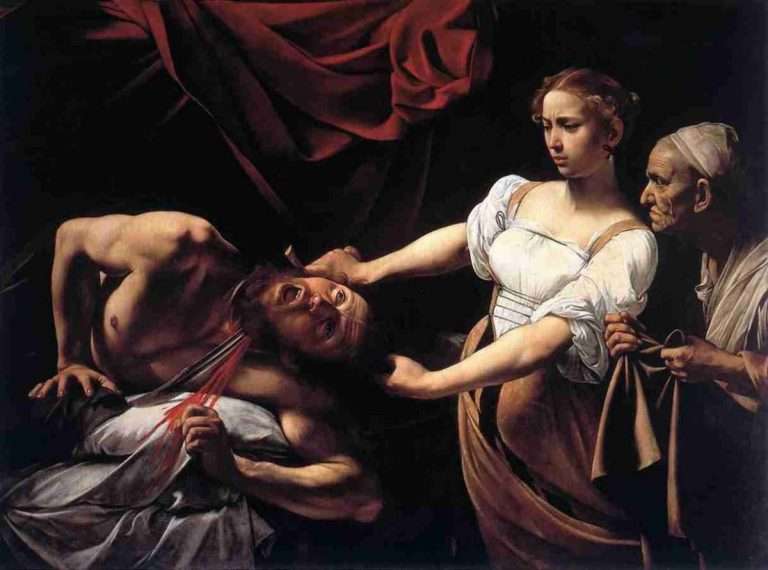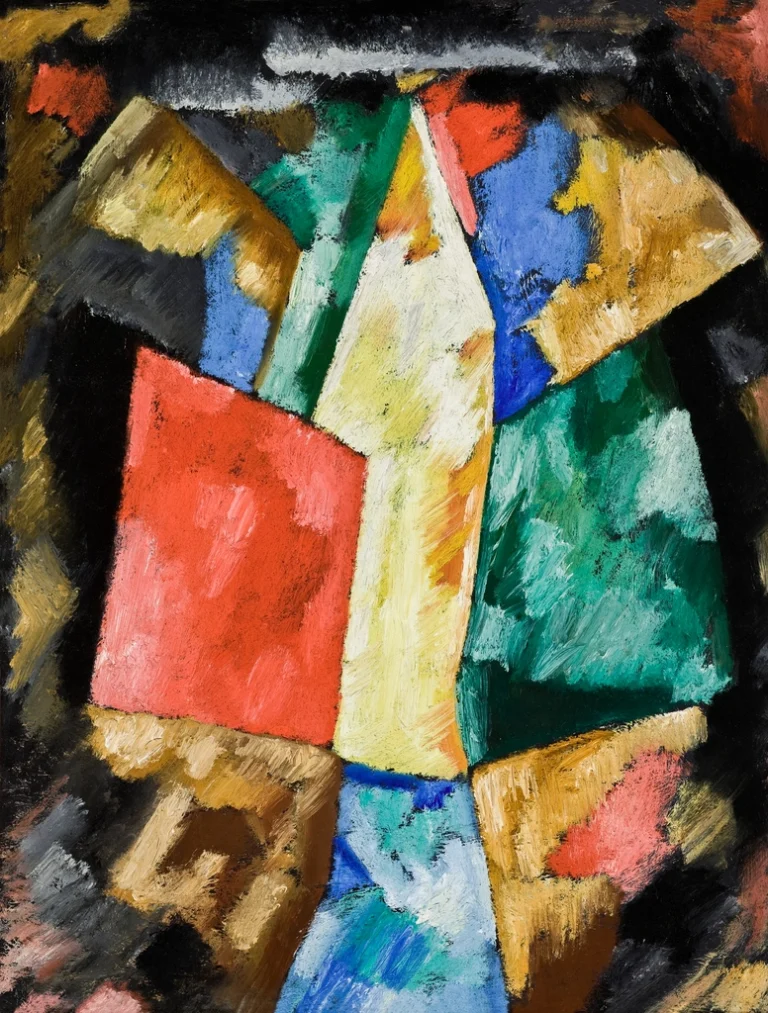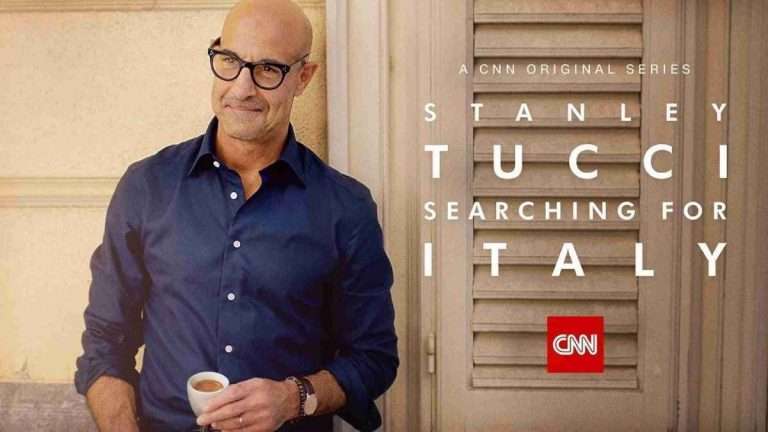
Upon my return from Palermo, I was hungry to learn even more about the history of Sicily and the Normans. The mosaics of Palermo, Monreale, and Cefalù, created in the 12th century, left me dumbstruck by their size, patterns, and shimmering, golden glory.
The mosaics that I will detail below are highlights of the churches and palaces that form part of the UNESCO World Heritage site dedicated to Sicily’s Arab-Norman past. Inscribed in 2015, the UNESCO sites “are an example of a social-cultural syncretism between Western, Islamic and Byzantine cultures on the island which gave rise to new concepts of space, structure and decoration. They also bear testimony to the fruitful coexistence of people of different origins and religions (Muslim, Byzantine, Latin, Jewish, Lombard and French).”
Mosaics in Palermo
Palermo has two outstanding sites for mosaics. They are Santa Maria dell’Amiraglio (aka La Martorana) and the Cappella Palatina located in the Palazzo dei Normanni.
Santa Maria dell’Ammiraglio aka La Martorana



In the heart of pedestrian friendly Palermo, Santa Maria dell’Ammiraglio, also known as La Martorana, is a small church that was founded in 1143 by George of Antioch, the admiral (ammiraglio) of King Roger I of Sicily. La Martorana is remarkable for the gilded Byzantine mosaics that decorate its dome and two walls.
The church came to be known by its nickname La Martorana thanks to a nearby convent that was founded later in the 12th century by sister Eloisa Martorana. The nuns of the convent became caretakers of the church in 1433 and were responsible for modifications within the church in the 16th and 18th centuries.

The mosaics here are magnificent, awash in sparkling gold and depicting typical scenes from Byzantium of Christ, disciples, sheep and shepherds, and floral motifs. The most notable mosaic in the church, however, is one of Roger II being crowned by Christ (rather than the Pope). It is the only surviving portrait of the Sicilian king.
Palazzo dei Normanni
After visiting La Martorana, a short walk across Palermo will lead you to the Palazzo dei Normanni, a stony fortress that conceals the riches that are inside. For mosaics in particular, there are two rooms which you must see: the Cappella Palatina (Palatine Chapel) and the Sala Ruggero (Hall of Roger).



Cappella Palatina – Palatine Chapel
The Norman Palace dates back to the 9th Century when it was known as Al-Qasr, a home for the Arab-Byzantine Emir of Palermo. The palace earned the name that it has now because of Normans and King Roger I, who conquered the island in 1072 and established Palermo as the seat of the Kingdom of Sicily. It was Roger’s son, Roger II, who added the Palatine Chapel (Cappella Palatina) to the palace complex.
If La Martorana gives you your first taste of Palermo’s golden mosaics, then you’ll be surprised by the Cappella Palatina, which somehow outshines it. Roger II’s private chapel inside the Norman Palace was consecrated in 1140 and contains mosaics and patterned marble from floor to muqarna-coffered ceiling.
Sala Ruggero – Hall of Roger

All of these Byzantine-era religious mosaics are overwhelming after a while. Which is why the Sala Ruggero may be my favorite mosaic-decorated room of all that I’m describing in this post.
What’s unique here are the images of exotic flora and fauna interspersed with hunting scenes. Many of you may recognize immediately the iconic leopards and palms. Perhaps I love this room because many of the scenes have become icons of Sicily. For example, the perfumery Ortigia Sicily uses many of the images from the Sala Ruggero for its branding. (By the way, Ortigia stores can be found in Rome, Milan, and elsewhere in Italy; their products — hand creams, scented candles, perfumed oils and soaps smelling of jasmine, oranges, almonds, etc. — make great gifts!)
Monreale Cathedral

The town of Monreale is in the province of Palermo, about 14km away and high on a hill that provides a view down to the capital and its port. It’s worth a half-day visit — we went in the morning — for its magnificent cathedral complex, considered one of the best extant examples of Norman architecture anywhere in the world.
Begun in 1172 and completed in 1267, Monreale Cathedral is the legacy of King William II, grandson of King Roger II. William II’s tomb is located here as is the tomb of his father William I.




But no one comes here for the tombs. They come for the two acres of golden mosaics that decorate the interior of the church. It is estimated that 2,200kg of gold were used to create the scenes from the Old and New Testaments. As in the Cappella Palatina (and other Byzantine churches) the Christ Pantokrator in the apse’s half dome is the focus.
Cefalù

If you have time — and hopefully you will make time if you read this before planning your trip to Palermo — finish your Arab-Norman architecture and mosaics tour with a day trip to Cefalù.
Cefalù is a small seaside town, known more recently as a backdrop for the lovely film Cinema Paradiso. But the imposing fortress-like stone cathedral recalls a sterner time in Cefalù’s past.

Work on the Cefalù Cathedral (Duomo) was begun in 1131, under King Roger II, and was only consecrated in 1267. The mosaics inside, begun in 1145, are fewer than those in Palermo and Monreale. But they still dazzle, especially given their more austere surroundings.
Video About the Norman Era in Sicily

The Norman era in Sicily and its legacy is vast and complex and best explained by this superb documentary series from the BBC. If you’re a history buff with an hour or two to spare, this is well worth your time.
Note that this documentary is only viewable in the UK. I used a VPN to watch it.
Fondazione Federico II
In addition to the above video, check out the Fondazione Federico II for more information on the Arab-Norman UNESCO heritage sites of Palermo, Monreale, and Cefalù. The foundation website also allows you to book tickets online ahead of time.
Learn More
Consider these books for learning more about Palermo’s Byzantine mosaics and about the history of Norman Sicily.
Post first published on October 8, 2018





![Gabbiano Azzurro Hotel & Suites: Sardinian Style in Golfo Aranci [Review]](https://www.italofile.com/wp-content/uploads/Pool-Terrace-Gabbiano-Azzurro-Sardegna-scaled-768x512.jpg)



